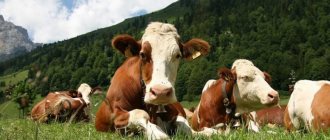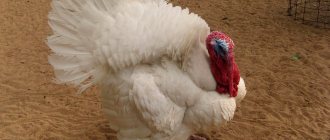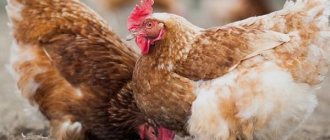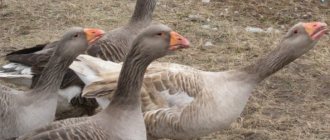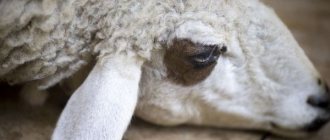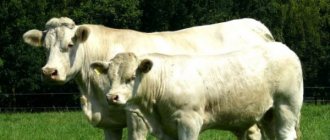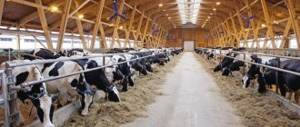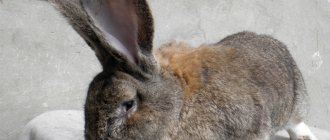- October 25, 2019
- Business plans
- Daniil Belousov
Individual entrepreneurship is constantly gaining momentum and more and more people dream of starting their own business. In this regard, it is worth considering turkey breeding as a business that can really bring good profits.
Each new project must be considered and evaluated from all sides. No one is immune from risks. In addition, it is important to consider the costs that will be required to raise and care for poultry. Not everyone is ready to devote so much time to living creatures. Therefore, let's weigh all the pros and cons.
How relevant is the idea?
Many people believe that everything related to agriculture is just a relic of the past and it is simply impossible to earn decent capital in this way. On the one hand, it is true that most consumers prefer regular chicken. But we shouldn’t forget about new trends. More and more Russians today are striving to adhere to a healthy diet. Girls go on diets in pursuit of beauty, and doctors recommend giving preference to natural products, without GMOs.
In this regard, raising turkeys as a business is a great idea. Not only is poultry meat considered extremely healthy, it is also classified as a dietary product. In addition, we can say that turkey is a kind of delicacy that restaurants and cafes are ready to boast about. It is not so easy to find in stores, so theoretically there should be no problems with the sale of meat.
Advantages and disadvantages
To understand whether it is worth seriously considering turkey breeding as a business, it is logical to evaluate all the advantages and disadvantages of such an idea. If we define the advantages, then they include, so to speak, waste-free production. After all, not only poultry meat is used, but also eggs. In addition, the private entrepreneur himself will always be provided with natural products.
Turkey is in fairly high demand among buyers, but, on the contrary, there are not so many competitors in this industry. This is partly due to the main disadvantage of such a project - raising turkeys is not easy for beginning entrepreneurs. You need to know a lot about these birds, take into account that they can get sick. In this case, a rather impressive amount of money will be required to properly maintain the turkey. If such problems do not frighten you, then a business of this type may well bring good income.
Conditions for keeping birds
To save on feed and veterinary care, you will need a spacious range for keeping and breeding turkeys. It is sown with grain crops or grasses. This bird grows best in the wild, so if you have your own plot of land on which you can equip a pasture, raising turkeys as a business will be more profitable and profitable.
In the wild, turkeys will be able to choose their own diet. In addition to grain, they will eat various insects, which provide the bird’s body with necessary microelements and proteins. Females living in free conditions can lay up to 200 eggs in one season.
No special conditions are required for breeding and keeping turkeys. They tolerate even severe frosts without problems, so you can refuse to build a capital heated poultry house.
How to decide on the direction of activity
The main question is whether it is worth starting a large farm at once or is it better to limit yourself to a small farm. In this case, everything depends on the experience of the future entrepreneur. If he has already been involved in turkey breeding before, then he can safely organize a full-fledged farm. Beginners in this business should think about a smaller-scale project, since not everyone can immediately correctly calculate their strength.
The main advantage of a small farm is that it can always be expanded. But if things don’t go well with a larger project, then much more difficulties will arise.
Breeding and keeping turkeys at home: is it profitable?
If we consider issues of profitability, then, as noted earlier, not only meat, but also poultry eggs will be sold. At the same time, turkey meat contains virtually no fat, so this product is considered to be of the highest quality. There is always a demand for turkey because, unlike chicken meat, it contains fewer calories and significantly more useful components.
You also need to understand that the weight of one turkey reaches 10-20 kg, which makes it the largest bird in agriculture. If we take into account how much such a carcass will cost, it becomes obvious that the profitability of the project will be at least 50%.
If you consider whether raising turkeys is profitable or not, then you should understand that at first there will not be much profit. However, if a businessman lives in a rural area, then it is much easier for him to organize such a business. But initial capital will certainly be required.
Profit
The main income from raising broiler turkeys at home is meat. Other breeds are bred to produce eggs for incubation and poults. Hatching eggs are sold for 100 rubles per piece. Day-old chicks can be sold for 150 rubles. for one individual. Typically, turkey meat is sold whole carcasses or divided into separate parts. One kilogram of turkey meat costs 200–300 rubles. Such products are sold to resellers or meat shops. In addition, cafes, restaurants and supermarkets buy turkey meat. Turkey eggs are also in great demand. Young animals are usually sold at the market to individuals or farms. If you want to organize a home business in rural areas raising turkeys, this is the best option that allows you to earn good money without a large initial investment.
In different regions, such a business may show different profitability. In the first year it is 60–80%. This indicator largely depends on the initial costs and the number of heads in the herd.
To increase the profitability of the farm, you can, in parallel with raising turkeys, organize pig breeding as a business. According to experienced farmers, this is one of the most profitable and promising areas of entrepreneurial activity in agriculture. Demand for pork is consistently high. Moreover, it does not fall even during the financial crisis.
At first, you can start breeding Vietnamese pigs as a business. Such a business will not require large financial investments and has a quick payback. Profit can be made both from the sale of meat and from the sale of young piglets. Vietnamese pigs primarily eat grass. Thanks to this, the costs of dry food are significantly reduced, especially in the summer. You can get your first income from breeding Vietnamese pigs in just six months.
Where to begin
Breeding and keeping turkeys at home should begin with proper organization of the farm. It is necessary to study the available bird breeds, their characteristics and breeding conditions. It is necessary to clarify what they eat and in what conditions they should exist. You also need to immediately consider the availability of good poultry feed. Its supply should last for a long time. If a businessman does not yet have his own plot, then he needs to purchase land and build at least modest residential buildings on it. You also need to register your business.
Feed base
When breeding turkeys, it is necessary to prepare a food supply for them. Individuals of broiler crosses show their good productivity when using combined feed from the manufacturer. The mixtures contain a balanced composition of proteins, fats, and carbohydrates. Manufacturers must introduce premixes with a vitamin and mineral complex. It is necessary to select the appropriate version of feed for young animals.
More on the topic: What grain to feed turkeys?
| № | Helpful information |
| 1 | turkey poults 1-5 days of life require a mixture of the pre-start version |
| 2 | for fattening up to 30 days I use the starter version |
| 3 | between days 31 and 90, turkeys require a mixture of the "growth" line |
| 4 | From 91 to 120 days intensive fattening is carried out. During this period, finishing line mixtures are used for feeding. |
Birds reach their meat productivity at the age of 3-4 months. From heavy cross breeds you can get a carcass weighing 7-10 kg. The total weight of a turkey is 13-15 kg. Over the entire fattening period, 1 head accounts for an average of up to 35 kg of dry mixture. For 50 heads you will need 1750 kg of feed. On average, 1 kg of mixture costs 30 rubles. Primary costs for the entire fattening period will be 50.5 thousand rubles.
To save on fattening at home, backyard farmers use a traditional diet for birds and prepare combined feeds themselves. Young animals will need grain mixtures of wheat, barley, oats, and corn. It is necessary to take care of succulent food.
It consists of green grass and vegetables. Protein supplements are introduced into the diet: sunflower cake, bran, yeast. For proper formation of bone tissue, birds are given chalk, salt, and bone meal. The diet should contain vitamins. They help improve immunity and better absorption of minerals.
The diet should be balanced, compiled in accordance with the age of the turkey. The volume of feed will be 2 times larger. To raise one turkey, you need to prepare at least 70 kg of food. To prepare feed, you need to take care of storage. There is an additional financial burden on the poultry farmer.
Room type
When all the documents are ready, it is necessary to think through the conditions for breeding turkeys. In this case, you can go several ways. Some entrepreneurs raise turkeys indoors, but do not have enclosures. The bird walks freely on the floor and goes about its business. However, experienced farmers prefer to spend money on making cages, since in this case many more birds can fit in the room, since the enclosures are built in several tiers.
If you choose the second option, you will still have to think about the territory where turkeys can roam. If they are constantly in one position, this will negatively affect their health and the quality of the meat.
Profitability assessment
Experts say that the business of raising turkeys is profitable. Its profitability can be 100-150% with the right approach and drawing up a business plan. But at the initial stage you need a lot of start-up capital.
Money will be needed for:
- construction of premises;
- purchasing equipment and laying all the necessary engineering networks: water supply, electrical networks, and so on;
- purchase of young animals;
- insulation of the room.
These expenses will require about 80,000–00,000 thousand rubles. In addition, you need to take care of purchasing food and paying utility bills. This will require about 7–8 thousand rubles. Employee salaries should be noted as a separate expense item.
If you buy 30 chicks in six months, when they grow up, you will be able to cover almost all the initial costs. The first income from the sale of meat will be more than 150,000 rubles. But in the future, the cost-to-profit ratio will increase.
Turkey breeds for breeding
The success of such a project depends on what type of bird will be bred. Experts do not recommend that inexperienced farmers give preference to rare breeds of turkey, as they are more difficult to care for. Also, you should not chase weight and buy a bird whose dimensions will be very large. It is best to give preference to turkeys of the “medium weight category”, which weigh no more than 12 kg in adulthood.
It is recommended to pay attention to two breeds of birds that are distinguished by good health and other indicators.
Breeds for breeding
There are three varieties of turkeys, each with its own characteristics.
To make it convenient, the birds were divided by weight: heavy, medium and light.
The first type includes large birds with a high growth rate. For example, by 4 months, females weigh about 11 kg (males - 23).
The average type includes those birds that by 4 months weigh no more than 7 kg (females) and 17 kg (males). They are not capricious in care and feeding, and have excellent resistance to various diseases. The most popular option when breeding turkeys.
The light type has minimal growth rates. By the age of 4 months, a bird weighs no more than 3 kg. Not popular among breeders.
In general, there are about 40 breeds of turkeys known in the world. They are divided not only by growth rate, but also by plumage, colors, etc. In general, they are divided into meat breeds and those raised to produce eggs. The former have a higher weight, the latter have a small and undeveloped physique.
Turkeys are also divided into special groups: maternal (better at laying eggs) and paternal (used for meat).
The “Universal” cross was bred in Russia, the birds of which have good endurance and are ideal for our climate.
For eggs
The most popular breeds in this group are:
- The white broad-breasted
is the most common in the world. They increase in size in any weather conditions (except for the regional far north). Egg laying begins at 9 months and extends to 6 months. At this time, you can get from 80 to 130 eggs (weight - 80 g). - Moscow Whites and Bronzes
are subgroups of the same breed that differ in the shade of their plumage. Laying also begins at 9 months, but lasts only three. You can get up to 100 eggs (weight 85 g). - North Caucasian White
is a new breed of turkey, but popular. You can get up to 120 eggs from them (weight - from 85 - 100 g). The clutch continues like that of a white broad-breasted turkey.
For meat
Popular meat breeds are:
- North Caucasian bronze
- the weight of birds is up to 7 kg (females), 17 kg (males), from them you can get up to 100 eggs. They grow under pasture conditions (bred in black earth regions). They are unpretentious to food, and during slaughter they are not exactly a consumer species. - Bronze Broad
-chested is an American breed, has a high body weight (females - 8 kg, males - 15 kg). They are also unpretentious to weather conditions and maintenance. They are bred mainly in the middle zone. - The North Caucasian White
holds the record for growth. By 40 weeks of life it reaches its maximum weight.
White broad-breasted turkey
This option is suitable for those who are already familiar with breeding and keeping turkeys. The fact is that representatives of this breed are distinguished by the heaviest weight. Males can grow up to 30 kg, and the maximum weight of a female can be 15 kg. Moreover, one such “layer” produces only 120 eggs per year. This is explained by the fact that this breed does not have the best ability to fertilize. However, if the farmer is primarily focused on selling meat, then this option is considered the most optimal.
Features of this business
Breeding turkeys for sale is one of the most profitable areas of poultry farming. Today in Russia there is practically no competition, although meat is highly valued on the market. Before starting work, you should consider the specifics of this business:
- Turkeys are gaining weight. Some breeds can weigh up to 30 kg by adulthood;
- meat is in demand at any time of the year, the average return on investment is 18 months;
- fairly low costs for young animals for breeding;
- The first income from the sale can be received in 4-6 months;
- Turkeys are hardier and more resilient birds than chickens. With proper prevention, diseases rarely cause mortality of the entire herd.
In addition to turkey meat, you can also sell
eggs, which can be obtained from one bird up to 200 per year.
It should be borne in mind that turkeys are picky about food, so the cost of feed will be high at first, but due to the rapid weight gain they will more than pay for themselves.
Turkey meat has a pleasant taste, dietary value, and is high in vitamins and microelements. Often used by athletes, as well as pregnant women due to its hypoallergenicity.
Uzbek fawn turkey
These are turkeys, the breeding and maintenance of which does not bring as much trouble as in the first case. The thing is that this bird does not weigh that much (no more than 12 kg) and has excellent survival rate. This means that the budding entrepreneur will not have to worry about possible diseases that the turkey may encounter.
It is also worth noting that this breed is distinguished by its excellent ability to adapt to changes in climatic conditions. But female Uzbek fawn turkeys also lay eggs quite rarely, no more than 90 eggs per year.
Business plan
Since we are talking about living beings, you need to think through all financial issues so that in case of failure it does not turn out that the bird has nothing to eat and nowhere to live. When drawing up a business plan for growing turkey, it is worth considering first of all not income, but costs. For example, it is worth allocating a budget for the construction of a poultry house. Depending on climatic conditions, it may require a heating system. However, even if hot weather prevails in the region, you need to be prepared for anything and think through the heating system. You will also need to organize ventilation, build enclosures and drinking bowls. Every month something will break, so it’s worth leaving money for unforeseen situations.
You will also have to purchase turkey chicks, which, depending on the breed, may have different prices. The final amount will directly depend on the number of individuals.
Features of different growing methods
Each growing method has its own characteristics. They must be taken into account before making a choice.
Walking method
A free-range turkey farm has the advantage of saving money on rearing. Birds are kept indoors only during the cold season. The rest of the time they live in the field. Energy costs are reduced. With this method, birds are more resistant to various diseases.
You may like: What should be in a business plan for a mini hotel
Cellular content
A high-quality poultry house with a microclimate maintenance system is required. This method is suitable for medium and light breed types. You can also raise young animals this way.
Floor method
With this method, the premises should be well heated. An automatic ventilation system must be installed. The method is suitable for all breeds.
How to make a choice
When choosing a growing method, you need to take into account the breed. For all breeds, only the floor method is suitable.
Features of breeding large birds
This is one of the most important aspects of organizing such an economy. When considering the process of caring for and breeding turkeys, it should be noted that the most difficult period occurs in the first month. At this time, chicks are most susceptible to various diseases and require increased attention.
It is important to ensure that the temperature in the room where the bird lives is about 20 degrees Celsius. You should keep no more than 5 individuals in one cage. If the bird is raised outdoors, then you need to take care of a secure fence.
It is noteworthy that turkeys have the largest daily meat gain. A bird can gain 80 grams per day. But this is only possible with proper and high-quality feeding.
Choosing a turkey breed for breeding
30% of business success depends on the correct choice of turkey breed. You shouldn’t immediately strive for big profits with little experience. It is easier to start breeding turkeys with light breeds (males weigh 10-13 kg), since they have a higher survival rate and require less care. Light breeds of turkeys are even used to raise them in cages like chickens. Heavy breeds are suitable only for walking or aviary breeding.
Uzbek field turkey. This breed is a leader in terms of high livestock survival rates. It belongs to the light category: males weigh 10-12 kg, females weigh 5-6 kg. This breed has low egg production (60 eggs per year), but very high survival rate and unpretentiousness when rearing. The Uzbek field turkey can be kept in polycarbonate greenhouses in winter. In a cold winter at minus temperatures of -20 degrees, polycarbonate greenhouses with turkeys without heating maintain a temperature of +10. For the Uzbek field turkey, this is still within the comfort zone. And most importantly, the room where turkeys live has significantly less moisture than where chickens and especially geese live. And in the summer, with the free-range breeding method, the Uzbek field turkey in the fields and meadows provides itself with up to 50% of the feed. The disadvantages of this breed include a feature characteristic of all breeds with high survival rates - a low hatching percentage of turkey poults - 68%. The strong shell carries out natural selection even at the hatching stage of the chicks. The strongest chicks hatch and have a high survival rate of up to 95%.
After gaining experience, you can test your skills on more profitable breeds with high meat gain.
White broad-breasted turkey of heavy category Big-6. The weight of males in some cases can reach up to 30 kg, and females up to 15 kg. The breed has a high egg production - 90-120 eggs per year. But due to the large weight of males, the eggs are poorly fertilized. In industrial production, turkeys are artificially inseminated.
These birds provide a lot of healthy, dietary meat, feathers and down. Moreover, due to high rates of meat growth, they require less costs for purchasing feed.
Turkey nutrition
In this matter, everything depends on the age of the bird, since the diet is different for young birds and adults. For example, if we are talking about a newly hatched chick, then it is recommended to give it boiled water with added sugar and green tea (no more than 1 teaspoon per liter of liquid is required). This kind of nutrition needs to be practiced for the first three days of a very tiny turkey’s life.
After 7 days you can switch to raw water. It is also fashionable to add a little sugar and green tea to it. Such drinking has a positive effect on the bird’s immunity. Some farmers use a very weak solution of potassium permanganate as additives. However, experts strongly do not recommend doing this.
For adult birds, it is recommended to use PK-5 feed. It contains all the necessary components for the full growth of turkeys. You can also consider the food that is offered for a specific breed of bird. As a rule, such compositions contain a more optimal ratio of minerals and vitamins needed by the bird.
You can also diversify the diet of turkeys with various mixtures. You can prepare them yourself from ground corn, barley and bran. If you want to pamper your bird with vitamin supplements, then it is best to cook grated carrots and sometimes feed the animals with fish giblets.
Feeding
You can organize raising turkeys at home as a business only if you are able to create the necessary conditions for them. The main problem of every farmer is quality feed. If you produce them yourself, the profitability of raising turkeys will increase significantly. Having your own feed base is an excellent help for running such a business. So, what to feed turkeys? Particular attention should be paid to various grain crops. It is most profitable to sow oats. The seeds of this crop are cheap, besides, it improves the soil and is a good green manure. To add variety to your diet, you can also grow wheat and legumes such as soybeans. Birds readily eat both grains and greens. Spilled grains have a positive effect on the immune system.
It is also necessary to introduce chalk and various vitamins into the bird’s diet so that turkeys lay high-quality eggs. Particular attention should be paid to vitamin E, which is given to chickens from the first days of life, in order to reduce the mortality of young animals. In addition, vitamin E should also be fed 2 weeks before slaughter of adult birds. This significantly increases the shelf life of meat.
Lighting and temperature
Young chicks should be exposed to light all day and night for the first three days of life. After this, they can spend no more than 30 minutes a day in the dark. Starting from the 20th day, the bird needs 15 hours of light.
The temperature regime required for the bird directly depends on the characteristics of the breed. However, young chicks must be treated with care. They should not be allowed to become hypothermic. You need to ensure that there are never drafts in the room. Birds are extremely sensitive to them and can easily get sick.
In all other respects, turkeys are quite unpretentious. If you clean the cages, feed and care for the birds daily, the results will not be long in coming and very soon you will be able to make your first active sales.
Sales of finished products
If we consider turkey breeding as a business, then it is worth noting that young animals should be raised with a preliminary agreement with clients. These could be restaurants, small cafes, meat departments or farmers' markets. You can sell meat and eggs yourself or hire staff for this.
However, in order to make a good profit and become a full-fledged supplier of turkey to the market, you need to certify all finished products. If the quality of the meat is documented, its cost automatically increases.
First of all, it is worth studying the websites of large retail outlets selling poultry meat. You should communicate directly with the business owner. At first you will have to face refusals, but sooner or later you will still find a regular client. It would also be a good idea to create your own website. Today, a large number of ordinary people prefer to buy meat and eggs from small farmers. It is believed that they do not feed the poultry with antibiotics and growth stimulants, so such products are much healthier and more nutritious. Buyers are willing to pay double for this, so it’s worth organizing a virtual point of sale.
Livestock
To breed turkeys at home, purchase purebred birds that belong to the heavy weight category, or broiler crosses. The advantage of breeding turkeys of a certain breed is that you can get good offspring from the bird with well-established characteristics.
To renew the population, a parent flock is created and fertilized eggs are obtained from laying hens. The material is placed in an incubator and after 28 days a new number of turkey poults are hatched.
The disadvantage of birds is that they do not gain weight as quickly as broilers. The difference can be 1.5-2 kg. Backyard farmsteads tend to raise purebred turkeys.
Broiler crosses are not usually used to create parent flocks. Experts warn that offspring may not have the same characteristics as their parents. The advantage is that young animals at 4 months reach a weight of more than 15 kg, but it is better to buy a new flock of turkey poults from the manufacturer; choose a trusted breeder who does not lie about the name of the cross, and will not sell turkey poults with egg production instead of meat chickens.
More on the topic: What kind of care do turkey chickens require?
To breed turkeys as a business, farmers most often purchase broilers. Whether it is profitable or not can be calculated by drawing up a business plan:
- One-day-old young animals can be purchased wholesale for 350 rubles;
- for 50 heads you will have to pay 17.5 thousand;
- Broiler cross chicken costs from 500 rubles. The cost of 50 heads is 25 thousand;
- if you purchase adult individuals for the parent flock, then each bird will cost 2 thousand. For a bird family, 6 females will be required. Costs will amount to 12 thousand;
- males are more expensive than females, up to 3 thousand. A family will need 1 turkey;
- the total cost of creating a parent stock will be about 15 thousand.
If the farm has an incubator, then it is more profitable to purchase adult birds than young animals, but if you count the costs of electricity, materials for disinfecting eggs, and food supply for adult birds, you may not be able to save money. To raise turkeys for meat at home, it is recommended to take a closer look at the following breeds and crosses of poultry:
- white broad-chested; at 4 months the male’s weight reaches 11.8 kg;
- bronze rock; at 4 months, a turkey can weigh about 10-11 kg;
- cross bronze-708; the weight of the turkey hen ate at 120 days was 13.5 kg;
- broilers Hybrid Converter – 16.5 kg;
- BIG-6 – 15.7 kg.
Cross broilers are more demanding in terms of keeping conditions. They are no different in immunity. Thoroughbred young animals are more resistant to temperature changes and respiratory diseases. As a preventive measure against infections, livestock are given antibiotics and vitamin complexes.
